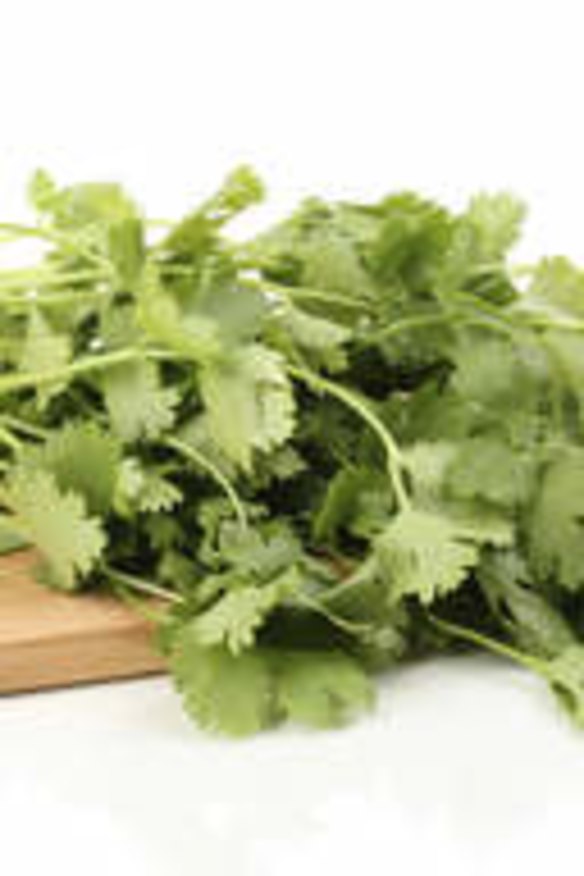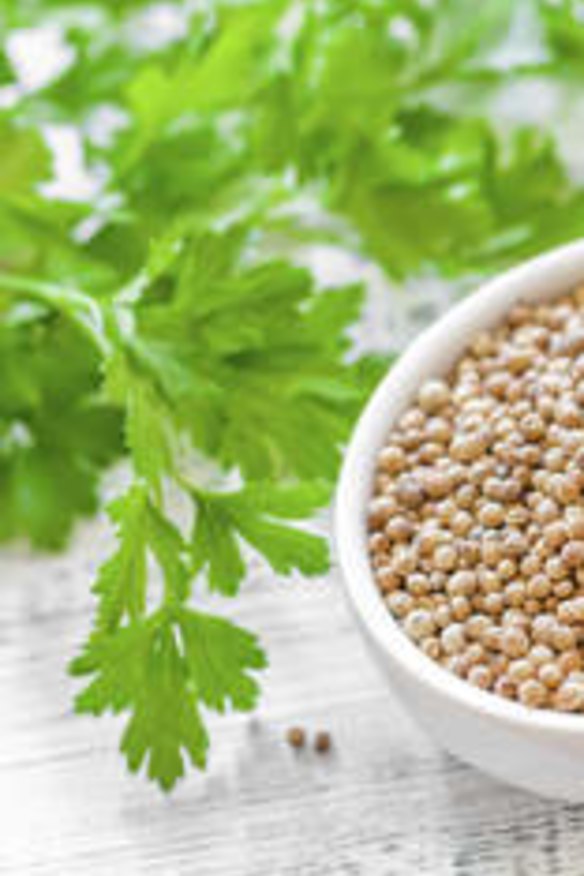Herb of freedom and promise

April is a transition month in gardening, as the summer fruits and vegetables are nearing the end of their harvests and the colder winter months approach. However, there are several herbs that can be planted now and grown through the winter.
Coriander is a pretty annual herb that will easily grow, both in planter boxes and in well-drained garden beds. Its feathery leaves are quite distinctive and it produces white umbrella-shaped flowers that will produce the tiny ball-shaped seeds. Coriander seed is used widely in casseroles and soups and in Asian curries.
It is native to southern Europe and the Middle East and has been cultivated for over 3000 years. Seeds have been found in the ancient tombs of Egypt dating back to the 21st Egyptian Dynasty that ran from 1085 to 945 BC.

In the Holy Scriptures in the Book of Exodus, chapter 16, verse 9 there is a specific reference to coriander when the Hebrews ate manna bread during their flight from Egypt. The scriptures state: ''It was white like coriander seed and tasted like wafers made with honey.'' So for Jewish people it is still one of the traditional bitter herbs eaten at the time of the Jewish Passover, when they remember their journey into freedom and to the promised land.
The name derives from the Greek word ''koris'' which literally means smelly bedbug since the young plant has a strong scent similar to this insect. This is why it is not commonly grown indoors but it does grow well in planter boxes on an outside sheltered ledge.
It is often referred to in Asia as Chinese parsley but it is distinctly different from the main parsley species.

In some European countries it is referred to as cilantro. Cilantro is used to describe only the plant and the leaves, and coriander is the seeds.
The plant grows a tap root, so plant directly where it is to grow. The plants are therefore very sensitive to any disturbance of their root systems. Plant the seed very thinly to just 6mm to 12mm deep and lightly cover with fine soil.
You will normally get a high strike rate with plants appearing in eight to 10 days. Thin out if you need to allow the remaining plants some space.
This herb will grow best in light, well-drained soil and with plenty of sunshine to push it along. Mix in plenty of organic matter such as well-rotted cow manure or home-made compost. It grows best in drier climates and so is well suited to the usual Canberra seasonal cycles.
The leafy foliage will be ready for first harvest after just six to seven weeks. The seed harvest occurs in 10 weeks after planting. Green Harvest seeds have a good variety called Slow Bolt Coriander which produces a lush plant whose green leaves can be harvested over some weeks.
If you encounter very hot weather then the plant will tend to bolt to seed before producing too much foliage.
Home-grown coriander seed is superior in quality to old seed purchased from supermarkets.
You can begin picking the bright green leaves when the plant has grown to at least 10cm. As with basil, the plant will keep producing more healthy leaves if you pick some leafy stems quite regularly. When the flower stems appear the plant transforms its smell to a pleasant scent.
Keep a close eye on the ripening seed heads as they will complete their ripening very quickly and drop their seeds overnight. One way to ensure you catch the harvest is to place a small paper bag over several flower bunches and tie it off. Cut off the drying flower stems and hang up the bags in a dry, airy location and the seeds will drop out from their husks in around 10 days.
Moroccan lamb with ginger, coriander and apples
750g diced leg of lamb
½ tsp ground ginger
1 tsp ground coriander
2 tsp ground cinnamon
2 onions, thinly sliced
½ cup prunes
3 medium mutzu or granny smith apples
2 tbsp honey
1 tsp grated orange rind
1 tbsp toasted sesame seeds
salt and pepper
Dice the leg of lamb into 2.5 cm cubes. Place the meat into a heavy-duty pan and cover with water. Add the ginger, coriander, cinnamon, sliced onions. Add a sprinkle of salt and some freshly ground pepper.
Bring to the boil then reduce heat so that it simmers for 1 hour. Add the prunes and continue to slow cook for a further 30 minutes until the lamb meat is tender and the liquid becomes quite thick. Should the liquid thicken too much, add a little water.
Peel, core and cut apples into thick slices. Stir in the honey, orange rind and apple slices and cook gently for a further 20 minutes.
Add the sesame seeds just before serving. Serve on a bed of rice, accompanied with steamed French beans and baby carrots.
This week in the garden
■ Plant out well-developed seedlings of the winter brassicas to provide you with an ongoing harvest of broccoli, cauliflower and cabbage.
■ Keep planting onion seeds into punnets to get your plants well established for transplanting in late May/early June.
■ Plant a crop of broad beans into any garden bed that has been just cleared of summer vegetables. The broad beans can be turned back into the soil when they are half grown or left to produce an early spring crop of nutritious beans.
■ Finish digging in generous amounts of compost into a garden bed in preparation for planting garlic (next week's story-line).
■ Do not be tempted to harvest your granny smith apples yet. Leave them hanging on the tree to fully ripen and take on a slight golden appearance. The first frosts will also sweeten them up. They can be then eaten through the winter months and the natural greasiness on the skin of this apple will help keep them in storage.
■ Rake up falling leaves from all deciduous trees and mix in with weeds, grass and manures to begin a new compost heap.
>>Owen Pidgeon runs the Loriendale Organic Orchard near Hall.